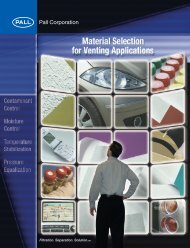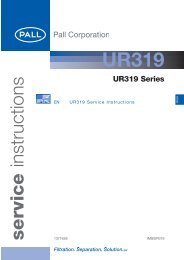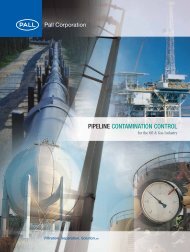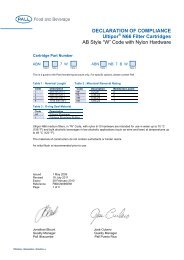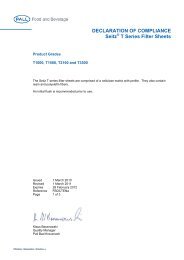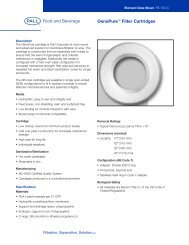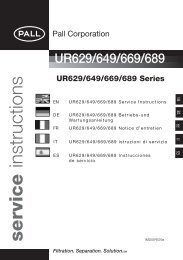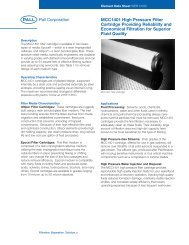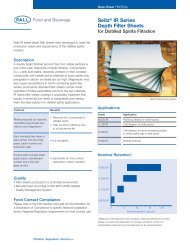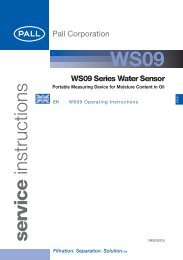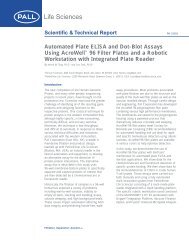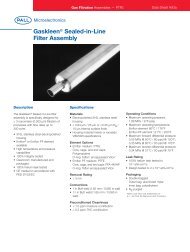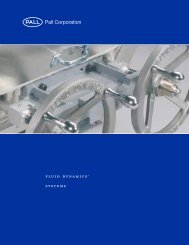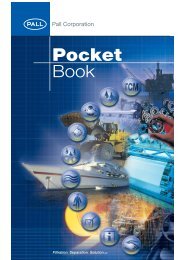POCKET BOOK_Final_Turned - Pall Corporation
POCKET BOOK_Final_Turned - Pall Corporation
POCKET BOOK_Final_Turned - Pall Corporation
- No tags were found...
Create successful ePaper yourself
Turn your PDF publications into a flip-book with our unique Google optimized e-Paper software.
Fluid Sampling ProcedureIntroductionThere are 4 methods for taking fluid samples. Method 1 is the best choice followed byMethod 2. Method 3 should only be used if there is no opportunity to take a line sample,and Method 4 should only be used if all others are impracticable.DO NOT obtain a sample from a reservoir drain valve. Always take the sample under thecleanest possible conditions, and use pre-cleaned sample bottles.If there are no line mounted samplers, fit a <strong>Pall</strong> sampling device to the <strong>Pall</strong> filter.Method 1Small ball valve with PTFE or similarseats, or a test point1. Operate the system for at least 30minutes prior to taking sample in orderto distribute the particulate evenly.2. Open the sampling valve and flush atleast 1 litre of fluid through the valve.Do not close the valve after flushing.3. When opening the sample bottle, beextremely careful not to contaminate it.4. Half fill the bottle with system fluid,use this to rinse the inner surfaces andthen discard.5. Repeat step 4 a second time withoutclosing the valve.6. Collect sufficient fluid to fill 3/4 of bottle(to allow contents to be redistributed).7. Cap the sample immediately and thenclose the sample valve.Caution: Do not touch the valvewhile taking the sample.8. Label the sample bottle with systemdetails and enclose in a suitablecontainer for transport.Method 2Valve of unknown contaminationshedding capabilities1. Operate the system for at least 30minutes prior to taking sample in orderto distribute particulate evenly.2. Open the sampling valve and flush atleast 3 to 4 Litres of fluid through thevalve. (This is best accomplished byconnecting the outlet of the valve backto the reservoir by using flexible tubing).Do not close the valve.3. Having flushed the valve, remove theflexible tubing from the valve with thevalve still open and fluid flowing.Remove the cap of the sample bottleand collect sample according toinstructions 4 to 6 of Method 1.4. Cap the sample immediately and thenclose the sample valve.Caution: Do not touch the valvewhile taking the sample.5. Label the sample bottle with systemdetails and enclose in a suitablecontainer for transport.16



